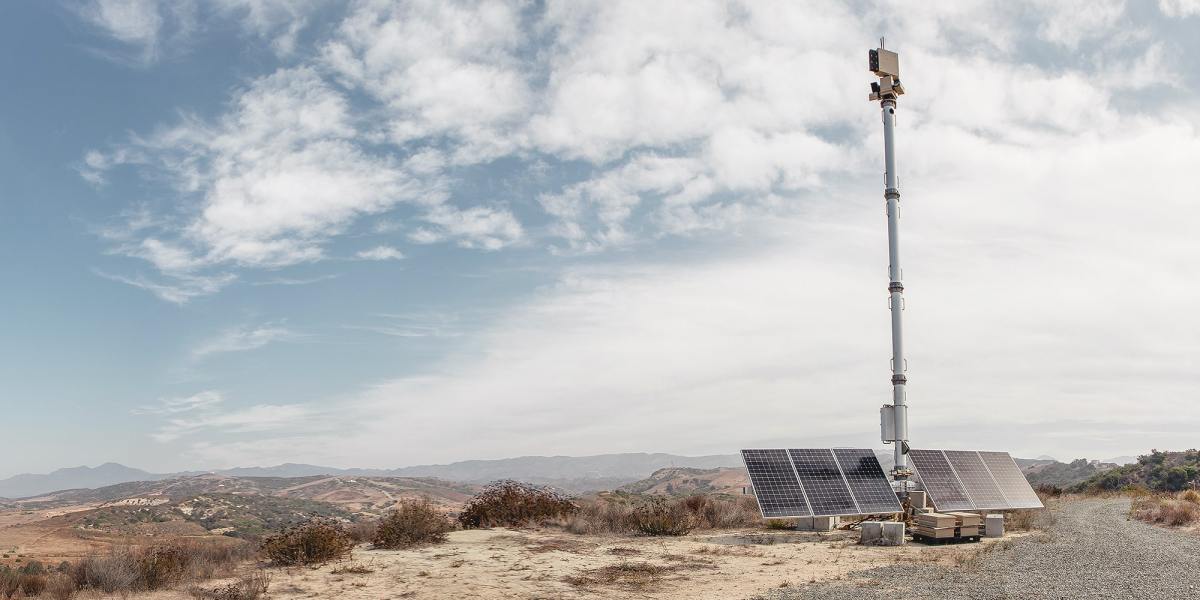CBP more than doubling autonomous sentry towers along Southwest border

U.S. Customs and Border Protection plans to greatly expand its use of Anduril Industries’ unmanned, self-powered sentry towers along the Southwest border by 2022, the largest such installation of autonomous surveillance by a national security agency to date.
Anduril’s software and sensors are geared toward spotting modern traffickers’ use of tunnels, ultralight aircraft, drones and other technology along the approximately 1,700 miles of rural border. CBP‘s deployment of towers to monitor migratory and narcotics traffic dates back to former President Bill Clinton’s administration, but the task gets more difficult every year.
In declaring 3-year-old startup Anduril’s tower deployments a program of record Thursday, CBP granted a five-year project lifespan to a company hoping to break up the five traditional defense contractors’ monopoly on this kind of government work. In all, CBP expects to field 200 of the towers after having tested a few dozen at other sites since 2018.
Anduril’s first product is a software platform, Lattice, that ingests visual, radar and thermal sensor information and processes it with machine learning to model a 3D environment. It’s about tracking objects and activity, not individuals, Matt Steckman, chief revenue officer at Anduril, told FedScoop.
“This can very easily be confused with other technologies used by CBP dealing with personally identifiable information and facial recognition,” Steckman said. “This is not that tech; it’s wide-area coverage.”
For CBP, Lattice software was integrated into 30-foot, solar-powered sentry towers with sensors toward the top and a computer box that processes incoming information to identify objects of interest.
Only if Lattice algorithms find something of relevance will the tower turn on its radio to transmit that information to CBP.
“These towers give agents in the field a significant leg up against the criminal networks that facilitate illegal cross-border activity,” said Border Patrol Chief Rodney Scott in the announcement. “The more our agents know about what they encounter in the field, the more safely and effectively they can respond.”
CBP first piloted four Lattice towers in the San Diego Border Patrol Sector in early 2018 under then-Commissioner Kevin McAleenan, who formed the Office of Innovation. Two years and three competitive expansions later, CBP has added 56 Lattice towers with plans for 140 more the next two fiscal years.
The towers can be moved within two hours by CBP personnel, wherever the agency feels it needs coverage.
“We’re doing it without requiring many people, so they don’t have a major labor cost connected to the systems,” Steckman said. “So it makes it much more deployable, fieldable and sustainable.”
First CBP, then the Pentagon
Becoming a CBP program of record increases the likelihood the Department of Defense will consider using Anduril’s software as well. The company has already begun experimental work with the Air Force and Marines tailoring its Lattice platform to more complex use cases in the Middle East and elsewhere.
Iran-backed militias, for example, reportedly used intelligence, surveillance and reconnaissance (ISR) drones to identify targets prior to their rocket and mortar attacks on Iraqi military bases hosting U.S. troops in recent months. Drone-borne improvised explosive devices (IEDs) are also a threat.
“Finding them, tracking them and then mitigating them is an exceptionally hard problem,” Steckman said. “And so we’re using the same Lattice software and upgrading the sensor technology to be more capable of addressing these military threats.”
Even more experimental is work to have Lattice establish and maintain “custody” of cruise missiles.
Most radar systems are designed to track ballistic missiles, where the curvature of the earth doesn’t affect trajectory and one, giant radar pointed upward is all that’s needed. But cruise missiles — proliferated in the Middle East and China — fly with the curvature of the earth, requiring many tiny radars dotting the landscape to maintain custody.
Anduril says it has fielded systems for countering drones and is in advanced testing for countering cruise missiles.



